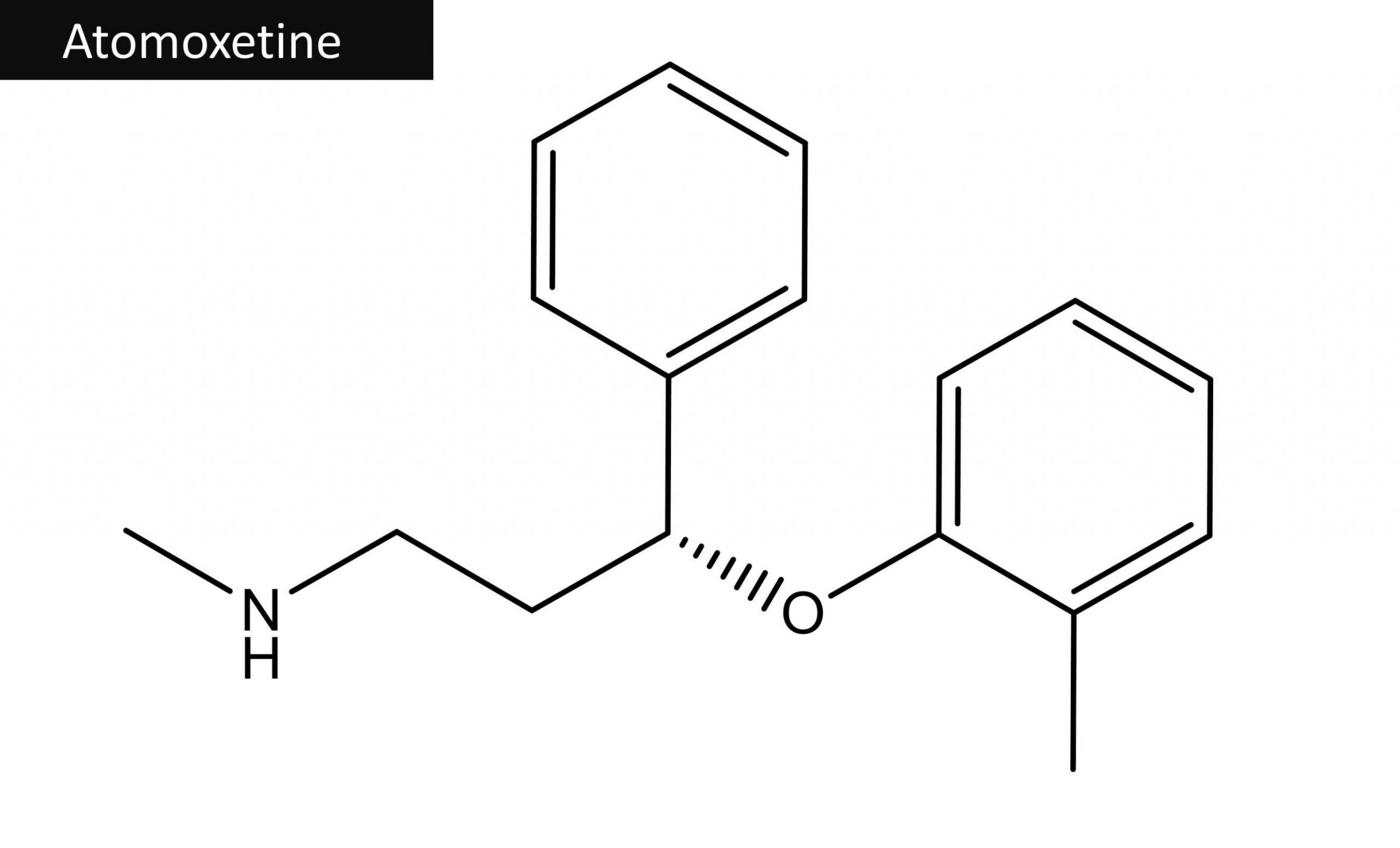Atomoxetine is a medication used primarily to treat attention deficit hyperactivity disorder (ADHD) in both children and adults. It works by increasing the levels of certain neurotransmitters (chemical messengers) in the brain, particularly norepinephrine. This helps to improve attention span, concentration, and control of impulsive behavior. Atomoxetine is often prescribed when stimulant medications are not suitable or are ineffective for managing ADHD symptoms. It comes in capsule form and is typically taken once or twice daily, as directed by a healthcare provider. Like any medication, atomoxetine may have side effects and should be used under the supervision of a qualified medical professional.
How Atomoxetine Works
Atomoxetine belongs to a class of medications known as selective norepinephrine reuptake inhibitors (SNRIs). Unlike stimulant medications commonly used for ADHD, atomoxetine does not directly affect the levels of dopamine in the brain. Instead, it increases the concentration of norepinephrine, a neurotransmitter associated with attention and reaction speed, by preventing its reabsorption into the neurons. This action helps improve attention span, focus, and emotional control.
However, patients with a prescription for this drug should only take it exactly as told by their doctor so that they do not fall into patterns of drug abuse.
Atomoxetine Side Effects
Like all medications, atomoxetine can cause side effects, although not everyone experiences them. Here are some potential side effects associated with atomoxetine:
- Gastrointestinal Upset: Upset stomach, nausea, vomiting, or constipation are common side effects of atomoxetine. Taking the medication with food may help reduce these symptoms.
- Decreased Appetite: Some individuals may experience a decrease in appetite, which can lead to weight loss, particularly during the initial weeks of treatment.
- Insomnia: Difficulty falling asleep or staying asleep (insomnia) can occur with atomoxetine use. Taking the medication earlier in the day or adjusting the dosage under the guidance of a healthcare provider may help alleviate this side effect.
- Dizziness or Lightheadedness: Feeling dizzy or lightheaded upon standing up quickly can occur, especially during the early stages of treatment or when changing the dosage.
- Dry Mouth: Atomoxetine may cause dry mouth, which can be alleviated by staying hydrated and using sugar-free gum or lozenges.
- Fatigue or Drowsiness: Some individuals may experience feelings of tiredness or drowsiness while taking atomoxetine, particularly at the beginning of treatment or when adjusting the dosage.
- Mood Changes: Mood swings, irritability, anxiety, or depression may occur in some individuals taking atomoxetine. It’s essential to monitor mood changes and report them to a healthcare provider.
- Increased Heart Rate or Blood Pressure: Atomoxetine can cause increases in heart rate and blood pressure, especially at higher doses. Regular monitoring of these vital signs is important during treatment.
- Urinary Problems: Difficulty urinating, urinary hesitation, or urinary retention may occur in some individuals taking atomoxetine.
- Liver Problems: Rarely, atomoxetine may cause liver damage or abnormalities in liver function tests. Healthcare providers may monitor liver function periodically during treatment.
- Allergic Reactions: Serious allergic reactions to atomoxetine are rare but can occur. Signs of an allergic reaction may include rash, itching, swelling of the face or throat, severe dizziness, or difficulty breathing. Seek medical attention immediately if any of these symptoms occur.
Atomoxetine vs. Adderall for Treating ADHD
Millions of children in the United States are living with the diagnosis of ADHD and need treatment. Another common drug used to treat attention deficit hyperactivity disorder is Adderall. So, what is the difference between Strattera (Atomoxetine) and Adderall? The main difference between these two medications is that Adderall is a stimulant, while Atomoxetine is a norepinephrine reuptake inhibitor.
While Adderall is generally one of the first options for treating ADHD, many doctors use Atomoxetine as well. It all depends on the person, their doctor, and their treatment protocol as far as which is better.
Both have been highly successful. However, regardless of which drug is used, patients must take care not to abuse it, as this can lead to addiction.
Potential Withdrawal Symptoms
When discontinuing atomoxetine, some individuals may experience withdrawal symptoms, which can include:
- Rebound ADHD Symptoms: The original symptoms of ADHD, such as inattention, hyperactivity, and impulsivity, may return or worsen temporarily.
- Mood Changes: Some people may experience mood swings, irritability, anxiety, or depression during withdrawal.
- Fatigue: Feelings of tiredness or fatigue are common as the body adjusts to the absence of the medication.
- Sleep Disturbances: Difficulty falling asleep or staying asleep may occur, leading to insomnia or disturbed sleep patterns.
- Flu-Like Symptoms: Headaches, nausea, dizziness, and flu-like symptoms might manifest during withdrawal.
Duration and Severity
The duration and severity of withdrawal symptoms can vary widely among individuals. In some cases, symptoms may be mild and resolve relatively quickly, while in others, they may persist for several weeks or longer. Factors such as the dosage of atomoxetine, how long it was taken, and individual differences in metabolism and sensitivity to medication can influence the withdrawal process.
Management of Withdrawal
If you’re considering discontinuing atomoxetine or any other medication, it’s crucial to do so under the guidance of a healthcare professional. Abruptly stopping atomoxetine can increase the likelihood and severity of withdrawal symptoms. Healthcare providers may recommend tapering off the medication gradually to minimize the risk of withdrawal effects. They can also provide support and guidance throughout the withdrawal process and may suggest alternative treatments if necessary.
Get Started Today
Are you struggling with withdrawal symptoms from atomoxetine? At United Recovery Project, we understand how challenging it can be to navigate this process alone. That’s why we offer comprehensive rehabilitation services to support you every step of the way.
When you choose United Recovery Project, you gain access to a team of experienced healthcare professionals who specialize in helping individuals overcome substance dependence and manage withdrawal symptoms safely. Our personalized approach ensures that your unique needs are addressed, and we work closely with you to develop a customized treatment plan that prioritizes your health and well-being.



